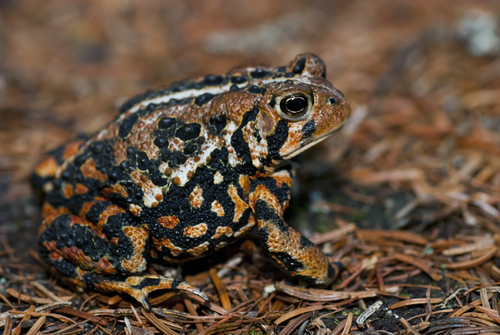
American Toad
The American toad, Anaxyrus americanus, boasts a warty exterior and diverse colorations for camouflage. Found across North America, this nocturnal insectivore thrives in forests and urban areas, impacting local ecosystems by controlling insect populations and supporting amphibian diversity through its seasonal breeding rituals.
5-10 years
Lifespan
453.59237 g
Weight
Length: 5 - 10 cm; Height: 5 - 10 cm
Size
Brown, Grey, Olive, Light-Brown
Color
2-3 years
Age of Sexual Maturity
Least Concern
Conservation Status
Stable
Population Trend
Distribution Range of the American Toad
Anaxyrus americanus, commonly known as the American toad, is native to North America. Its geographical distribution extends through eastern Canada and the eastern United States. It is typically found from the northeastern regions of the United States and adjacent parts of Canada, stretching westward to North Dakota and down south to parts of Texas and Florida.
American Toad's Habitat
Environmental Conditions
The American toad inhabits a variety of environments including forests, grasslands, agricultural areas, and suburban gardens. It prefers moist environments but is adaptable to drier conditions, especially during its terrestrial adult phase. Important habitat characteristics include access to freshwater for breeding, such as ponds, streams, and shallow pools.
Ecological Niche
Ecologically, Anaxyrus americanus plays a significant role as both predator and prey within its ecosystem. It helps control insect populations, consuming a diet rich in insects and other small invertebrates. The toad is also a crucial prey species for a variety of predators including snakes, birds, and mammals. The species is nocturnal, which influences its role and interactions within its habitat.
Copyright @ Nature Style Limited. All Rights Reserved.
 English
English